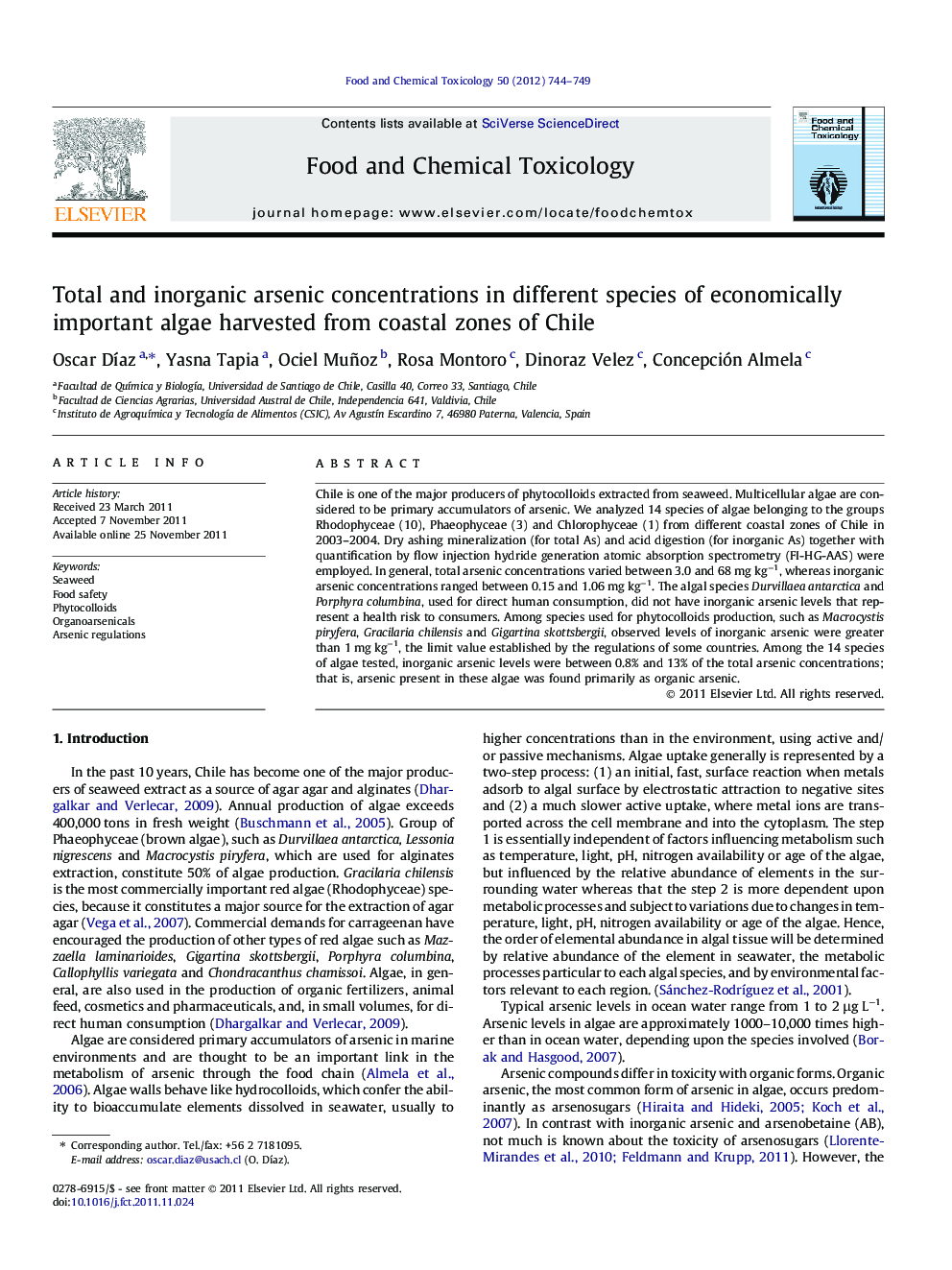| کد مقاله | کد نشریه | سال انتشار | مقاله انگلیسی | نسخه تمام متن |
|---|---|---|---|---|
| 5853574 | 1561795 | 2012 | 6 صفحه PDF | دانلود رایگان |

Chile is one of the major producers of phytocolloids extracted from seaweed. Multicellular algae are considered to be primary accumulators of arsenic. We analyzed 14 species of algae belonging to the groups Rhodophyceae (10), Phaeophyceae (3) and Chlorophyceae (1) from different coastal zones of Chile in 2003-2004. Dry ashing mineralization (for total As) and acid digestion (for inorganic As) together with quantification by flow injection hydride generation atomic absorption spectrometry (FI-HG-AAS) were employed. In general, total arsenic concentrations varied between 3.0 and 68 mg kgâ1, whereas inorganic arsenic concentrations ranged between 0.15 and 1.06 mg kgâ1. The algal species Durvillaea antarctica and Porphyra columbina, used for direct human consumption, did not have inorganic arsenic levels that represent a health risk to consumers. Among species used for phytocolloids production, such as Macrocystis piryfera, Gracilaria chilensis and Gigartina skottsbergii, observed levels of inorganic arsenic were greater than 1 mg kgâ1, the limit value established by the regulations of some countries. Among the 14 species of algae tested, inorganic arsenic levels were between 0.8% and 13% of the total arsenic concentrations; that is, arsenic present in these algae was found primarily as organic arsenic.
⺠Brown algae group showed the highest total arsenic concentrations. ⺠The algal species used for direct human consumption do not represent a health risk. ⺠Macrocystis piryfera used for alginates production, exceed inorganic arsenic of 1 mg kgâ1. ⺠Arsenic present in all algae species tested was found primarily as organic arsenic.
Journal: Food and Chemical Toxicology - Volume 50, Issues 3â4, MarchâApril 2012, Pages 744-749